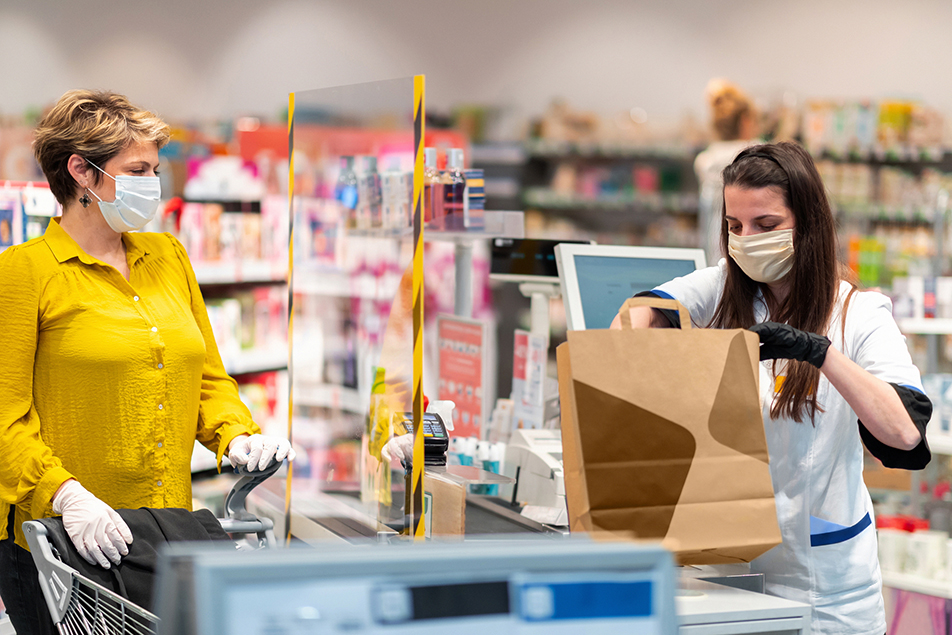
Jeffrey Boord, MD, PPG – Endocrinology, Chief Quality and Safety Officer, Parkview Health, answers your questions regarding the most recent developments in the fight against coronavirus and what the general public needs to know as we move toward reopening the state.
What do we know now that we didn’t know six weeks ago about the COVID-19?
When this started, we didn’t know how high the spike in COVID-19 cases would be in our region. Because of this, we mobilized our incident command center. We were hoping for the best, but we wanted to be prepared for the worst. Fortunately, the social distancing measures that were put in place, both regionally and statewide, really helped flatten the curve in northeast Indiana. Although we have seen quite a few cases of COVID-19 in our hospitals, it has been a manageable volume. We have been able to take care of those patients.
We have learned a lot about how to manage patients with COVID-19 since the pandemic came to our region. We identified the first case in our region, and we have learned a great deal since that happened. We now have implemented detailed protocols on how to evaluate and manage patients with COVID-19 in the hospital and in our emergency departments. We also have dedicated outpatient respiratory clinics to evaluate patients that could have COVID-19. If someone is experiencing symptoms of COVID-19 they can visit a respiratory clinic in each of the counties we serve to be evaluated and receive testing.
As we loosen social distancing, will we see a spike in the number of COVID-19 cases?
There are many aspects to social distancing. It’s more than just staying six feet apart or wearing a mask. To help our community prepare for the gradual reopening of the state outlined by the governor, Parkview has been collaborating with Greater Fort Wayne Incorporated, Allen County Department of Health and the Northeast Indiana Regional partnership. Part of the collaboration has included offering numerous webinars. These webinars provide the opportunity to communicate directly with community organizations, local businesses, faith groups and other areas of the economy to provide sensible guidance on how that really looks. These webinars have included measures that can be put into place in retail settings, churches or offices to help maximize the safety for employees, customers students and clients. It has been very well received.
It’s important for places of business take opportunities to eliminate risk of exposure. An example would be implementation of virtual meetings. Teleconferencing can mitigate risk. At Parkview, we have over 4,000 coworkers who are currently working remotely. That’s another strategy that can be used to augment social distancing. Cleaning surfaces, high touch areas and hand hygiene, can greatly reduce the risk of seeing another spike in cases as we move forward and start to re-open.
However, this is a situation that will have to be greatly monitored. One way that Parkview supports this is by submitting data daily from all our community hospitals to the Indiana State Department of Health, the Allen County Department of Health and other health departments. This data includes information about new cases, how many patients we have admitted with COVID 19, testing results, etc. This helps the state keep a pulse on what is going on with the pandemic in our communities.
Are we looking at the right numbers?
It’s important to look at several different measures, and that is what the state is doing. We aren’t just looking at the number of positive tests, but also hospitalizations and rates of visits with respiratory illness. It’s particularly important to review rates of visits with respiratory illness now that seasonal influenza is basically over for the year. If someone has classic respiratory symptoms, it’s now more likely to be COVID 19. It’s important to look at the fraction of patients in the hospital that are seriously ill. By doing what the department of health calls “contact tracing”, we can keep a much closer eye on disease activity over time as we go forward.
What could cause a spike down the road, if we go through all five stages of the governor’s plan?
That’s difficult to predict. We could have exposures in a range of different venues or situations. That’s where having a robust surveillance program is critical. If we see some early signals, such as a spike in cases, that provides the opportunity for the health department, government agencies and the media to get the word out quickly. It will be important to modify things quickly to mitigate any risk of early resurgence in our community as we start to open up and have more potential social interactions.
Is the game plan to go from keeping healthy people at home, to trying to make sure that the only people that are staying home are sick people or potentially sick people?
Part of the plan is to make sure that we keep in mind those in our community who are more vulnerable to becoming severely ill with COVID-19, such as older adults and people with chronic health conditions, and that we incorporate additional safety measures for them. On an individual basis, these individuals can continue to reduce the number of trips outside the home or outside of work. Even in the workplace we need to keep vulnerable individuals in mind and we may need to have additional measures in place. If a business has an older employee or an employee with a chronic health condition, they may consider having them work remotely or allow them to have their own office so that they can maintain social distancing.
Is a vaccine likely? Do you have any idea when?
The development and implementation of a vaccine for COVID-19 is going to be key in managing the pandemic long-term. If we can get a vaccine that has been proven to be effective, and we can administer that widely across our population, that is what will mitigate the risk of having recurrent spikes of COVID-19 in the community. There has been some very promising early work, which is encouraging. It’s difficult to speculate when we might see a vaccine but if I had to guess, I would have to say 2021. Certainly, if it happens sooner we will be delighted here at Parkview. We look forward to administering the vaccine to our patients and co-workers once it is available.
Is Parkview part of any research regarding the virus or therapies for the virus?
Yes, we are. We took part in one of the initial phase 3 expanded access trials for Remdesivir, and as part of that trial, we treated two patients at Parkview Regional Medical Center. The results from that phase 3 trial, led the Federal Drug Administration (FDA) to grant emergency use clearance for the drug. As a community health system, one of the unique assets that we have is the Parkview Mirro Center for Research and Innovation and our dedicated research team and team of specialists with experience participating in clinical trials.
Parkview has also been collaborating with the American Red Cross on another promising therapy which is derived from donated plasma from an individual that has recovered from COVID-19 and has the essential antibodies and immune factors that can help another individual that is critically ill fight off the infection. The Red Cross currently needs individuals who have previously recovered from COVID-19 and are willing to donate plasma. If there are individuals in the community who are willing to donate plasma to help with that effort, they can visit their website to learn about the donation process.
Have you seen results from any of the antibody testing?
Antibody testing is a very interesting topic. There are a couple things to keep in mind. Antibody testing is a blood test. It is used to identify an immune response to recent or prior infection with COVID-19. There are a wide number of antibody tests that are on the market. Early on, the FDA decided to wave a lot of the standard evaluation and regulatory requirements to bring diagnostic tests to the market. As a result, there was a flood of antibody tests to the market. Unfortunately, a majority of those have not had any formal screening and there has been data that has come from a research team from California that show that many of these aren’t reliable. This has been a limiting factor. The FDA has recently changed their stance on regulations. There are now better-quality tests that are coming online. Some tests are currently being used by the Indiana State Department of Health to sample individuals in every county in the state to give us a broad picture of the activity of COVID 19 in our community. It will help inform public health. At this point we don’t know enough about how the tests should be used or interpreted on a clinical basis for an individual patient.



